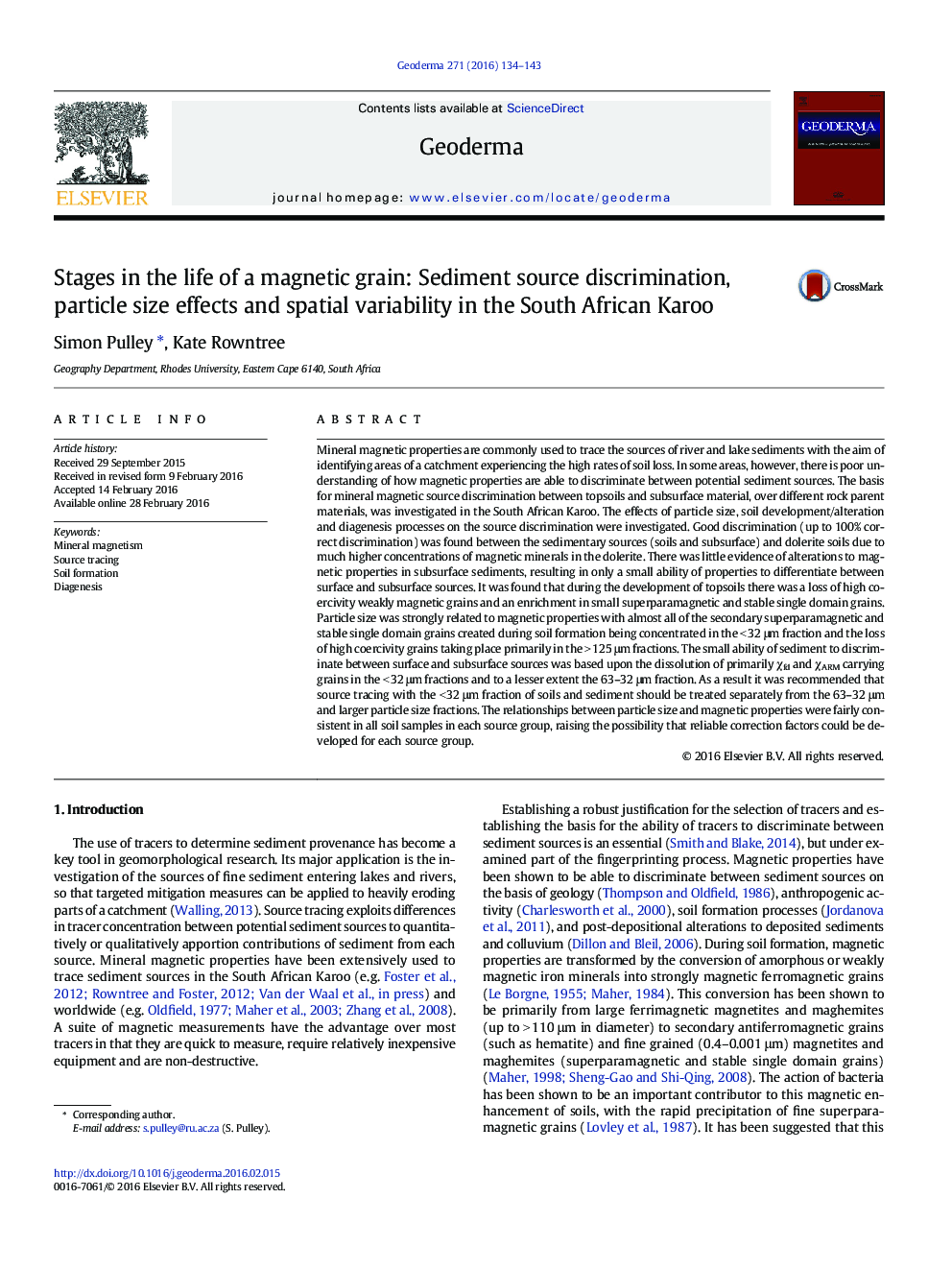| کد مقاله | کد نشریه | سال انتشار | مقاله انگلیسی | نسخه تمام متن |
|---|---|---|---|---|
| 4572979 | 1629446 | 2016 | 10 صفحه PDF | دانلود رایگان |
• Soil formation caused the loss of primary magnetic grains and the ingrowth of small grains.
• The ingrowth of small secondary grains was primarily in < 32 μm soil particles.
• There was good discrimination between sedimentary and igneous soils.
• Limited subsurface discrimination was because of the dissolution of magnetic grains.
• Relationships between magnetism and particle size were fairly consistent.
Mineral magnetic properties are commonly used to trace the sources of river and lake sediments with the aim of identifying areas of a catchment experiencing the high rates of soil loss. In some areas, however, there is poor understanding of how magnetic properties are able to discriminate between potential sediment sources. The basis for mineral magnetic source discrimination between topsoils and subsurface material, over different rock parent materials, was investigated in the South African Karoo. The effects of particle size, soil development/alteration and diagenesis processes on the source discrimination were investigated. Good discrimination (up to 100% correct discrimination) was found between the sedimentary sources (soils and subsurface) and dolerite soils due to much higher concentrations of magnetic minerals in the dolerite. There was little evidence of alterations to magnetic properties in subsurface sediments, resulting in only a small ability of properties to differentiate between surface and subsurface sources. It was found that during the development of topsoils there was a loss of high coercivity weakly magnetic grains and an enrichment in small superparamagnetic and stable single domain grains. Particle size was strongly related to magnetic properties with almost all of the secondary superparamagnetic and stable single domain grains created during soil formation being concentrated in the < 32 μm fraction and the loss of high coercivity grains taking place primarily in the > 125 μm fractions. The small ability of sediment to discriminate between surface and subsurface sources was based upon the dissolution of primarily χfd and χARM carrying grains in the < 32 μm fractions and to a lesser extent the 63–32 μm fraction. As a result it was recommended that source tracing with the < 32 μm fraction of soils and sediment should be treated separately from the 63–32 μm and larger particle size fractions. The relationships between particle size and magnetic properties were fairly consistent in all soil samples in each source group, raising the possibility that reliable correction factors could be developed for each source group.
Journal: Geoderma - Volume 271, 1 June 2016, Pages 134–143
